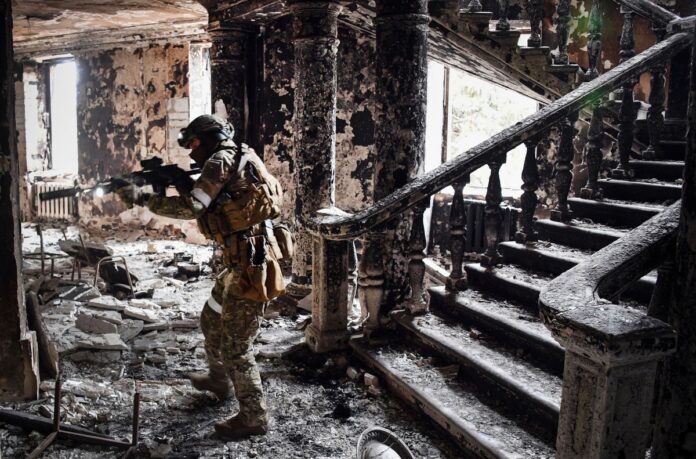Radiation levels in the Russian-controlled southern Ukrainian city of Mariupol are 15 times higher than what is considered a safe figure, a Ukrainian official has said.
Radiation in the area around Mariupol’s Pishchanyi beach, close to the city’s port, had been attributed by Russian social media outlets to a severe storm across the Black Sea region exposing thorium sands.
However, Petro Andriushchenko, an adviser to the exiled Ukrainian mayor of the Russian-occupied city, said in a post to Telegram on Tuesday that this was not the reason.
He attributed the alleged surge in radiation to Russian “bombing and rocket attacks on the city.”
“The real reason for the high level and exposure of the sands is not the storm, but the Russian occupation,” he said. Newsweek could not independently verify this statement, or what the true level of radiation in the area is.
A Russian Telegram account had reported on Monday that Mariupol residents could be exposed to “potentially dangerous levels of radiation” following the storm that has ravaged the Black Sea in recent days.
ALEXANDER NEMENOV/AFP via Getty Images
The sea washed away most of the usual sand on the city beach and exposed the black thorium layer, according to the “Mash in Donbas” Telegram channel. The outlet is believed to be linked to Russia’s security services.
Mariupol’s Ukrainian city council said that radiation on the beach had increased fourfold, adding that the sand that “covered the thorium layer was washed away by water.”
“Thorium sands are a natural part of the Azov coast,” the council said. The Russian Defense Ministry has been approached for comment via email.
It is not known what the potential health or ecological effects of such an event could be. Thorium is described by the London-based World Nuclear Association as a “naturally-occurring, slightly radioactive metal” found in small quantities in most rocks and soils. “Thorium is very insoluble, which is why it is plentiful in sands but not in seawater,” according to the organization, which promotes nuclear energy.
Mariupol was the first major city to fall to advancing Russian forces in the early months of all-out war. The port city in southeastern Ukraine was quickly surrounded by Russian forces before being captured in May 2022.
Resisting Ukrainian soldiers spent months besieged in the city’s Azovstal steelworks. The city was seen as a symbol of fierce Ukrainian resistance, but it came under heavy bombardment and sustained significant damage.
“If someone measured the level of radiation in Azovstal at the moment, as well as analyzed the composition of the soil and dust blown by the wind across the city and rain into the sea, the picture would become truly apocalyptic,” Andriushchenko said on Telegram. It would show an “ecocide,” he added.
Newsweek could not independently verify these statements.
Ukraine’s summer counteroffensive, which kicked off in early June, had hoped to cleave a path through fortified Russian positions in southern Ukraine all the way down to Mariupol and the Sea of Azov. However, progress proved slow with few adjustments to the front line, and Mariupol remains under the Kremlin’s control.
Uncommon Knowledge
Newsweek is committed to challenging conventional wisdom and finding connections in the search for common ground.
Newsweek is committed to challenging conventional wisdom and finding connections in the search for common ground.


